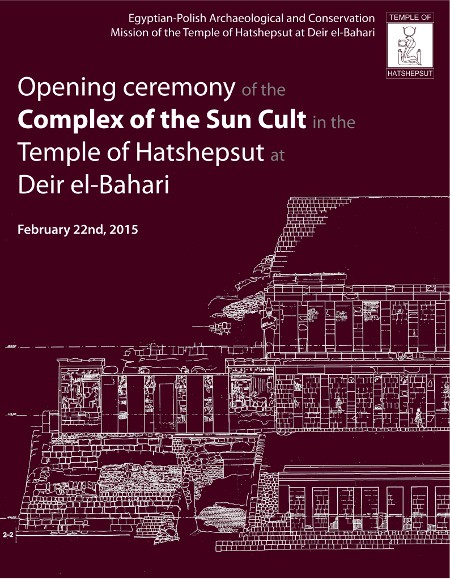The Solar Cult Complex in the Temple of Hatshepsut in Deir el-Bahari, reconstructed by a Polish Centre of Mediterranean Archaeology, University of Warsaw mission, will be opened to visitors on the 22th of February, 2015. The event is organized by the Egyptian Ministry of State for Antiquities in cooperation with the PCMA Research Centre in Cairo and the Embassy of the Republic of Poland.
The temple, a prominent world heritage site, is one of the most recognizable monuments in Egypt. The list of the opening guests includes therefore top Egyptian officials, including the Minister of State for Antiquities. The Polish side will be represented by the Polish Ambassador, Michał Murkociński, the Director of the PCMA, Prof. Tomasz Waliszewski, and the Director of the PCMA Research Center in Cairo, Dr Zbigniew Szafrański, who is also the director of the Deir el-Bahari mission.
The funerary temple of Queen Hatshepsut, one of the few women pharaohs, who ruled Upper Egypt, was built in 15th century BC. Situated at the foot of a towering rocky slope in which it is partly hewn, it consists of three terraces connected by ramps leading to vast porticoes.
The Polish mission was entrusted with the reconstruction of the Upper Terrace of the temple back in the 1960s; since then, the painstaking work by generations of archaeologists, restorers and architects led to the rebuilding of the Terrace, including the Solar Cult Complex. In the course of this work, the surviving walls of the temple had been preserved and their beautiful relief decoration was restored to its previous splendor. From the rubble covering the temple over ten thousand stone blocks with fragments of relief decoration had been recovered and patiently recomposed. This allowed researchers to fathom the message of the religious program of Queen Hatshepsut.
More on the Hatshepsut Temple in Deir el-Bahari:
Polish-Egyptian Archaeological and Conservation Mission at the Temple of Hatshepsut at Deir el-Bahari

